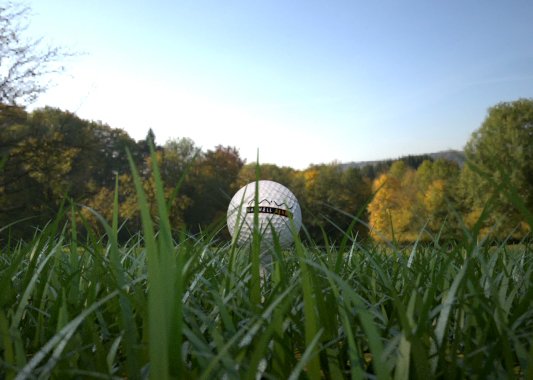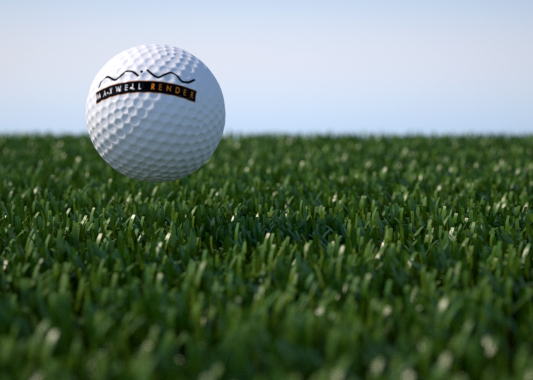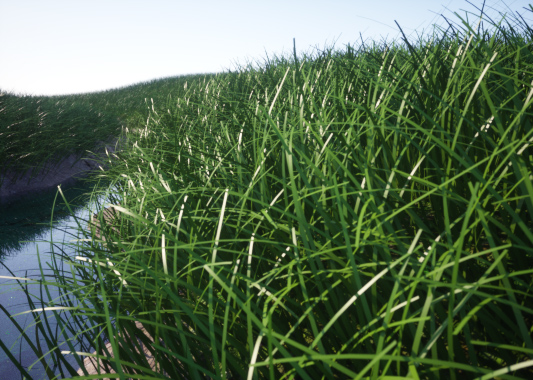Grass Examples
We've listed the parameter values for a few basic grass types below, to help you get started! In all of these examples, the flat primitive was used as it renders faster than the Curve primitive and if you set enough points per blade, the flat primitive will still look smooth even with the camera relatively close to the blades. Increasing the number of points per blade, will also increase RAM usage, so the Curve primitive is still useful for close-ups and if you need to use a lot of blades while still keeping the number of points per blade low to minimize the RAM requirements (the Curve primitive generally does not need more than 4 points per blade).
It is also recommended to turn on the Level of Detail (LOD) parameters as generally, farther away from the camera, less blades are needed for a convincing look. If you run into RAM problems rendering many blades (the symptom being that either Maxwell Studio crashes during export of the scene, or your main 3D application if you're using a plug-in), the LOD is the first thing you should turn on and adjust. The LOD adjustments will depend very much on your scene and what your camera sees, so these settings are not mentioned.
Please keep in mind that all these settings are general suggestions to achieve an overall look and give you some practical examples.
Generic grass material
To get you started quickly you can download these two materials, one uses thinSSS for the most realistic looking grass, the other uses the same textures but no thinSSS for fastest rendering:
This material uses two Layers, the top Layer has a Layer opacity mask set to use UV channel 1 to give some variation in color over the grass surface. See the Grass page in the documentation section for more info.
| Grass type | Image | Parameters |
|---|---|---|
Wild Grass The randomness of the natural grass is achieved by using high Variation percentages for Length, Angle and Bend. |
| |
Golf Green To get the characteristic golf green look (very dense, short, but also chaotic), a strong and homogeneous Cut Off is important and a large Initial Angle Variation setting. On such a short grass, the Flat primitive works fine and renders faster. For a less perfect golf green, set Cut Off to 100% (which means the full length of the blades will be rendered) and increase the Length Variation.
|
| |
Tall big grass Even for large bendy blades of grass, with enough Points per Blade, the Flat primitive looks perfectly smooth, and renders faster than the Curve primitive. The large height of this grass needs a larger Bend Radius to make the blades bend slowly over a large radius. |
| |
Fast Generic Grass for housing projects On projects where the grass is not the focus, you can save a lot of Ram and render time by optimizing the grass distribution with the Level of Detail settings, depending on the size of your scene and what the camera sees. |
|



